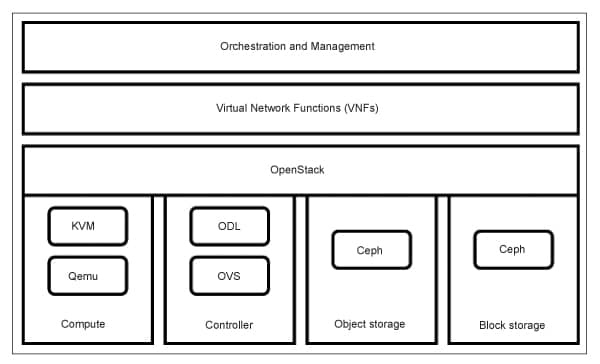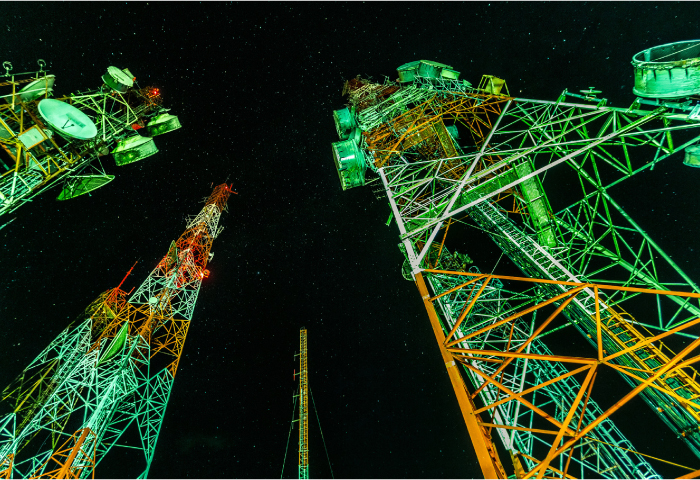This sixth article in the series on integration of network function virtualization (NFV) with the DevOps pipeline talks about the advantages of NFV and the best way to manage NFV infrastructure.
Service providers are always looking for solutions that provide the latest telecom applications and comply with the demands of their users. These solutions should not be a bottleneck while scaling or call for hefty financial investment. The hardware deployed is specialised to do a task specific to the service — for example, firewall, monitoring, routing, and more.
However, capex and opex investments will see a rise if this proprietary hardware reaches the end of life quickly due to rapid innovations.
Network function virtualization
Network function virtualization (NFV) brings service providers out of this bottleneck. It is a cost-effective implementation of telecommunications infrastructure. The functioning proprietary hardware is replaced with an IT solution with the use of virtualization. NFV connects a wide range of industry-grade servers and hardware, which are driven by a common set of virtual network functions (VNFs). It aims to transform the way network communications connect to network equipment such as switches and storage (the latter is remotely located in either data centres or end user premises).
The book titled ‘Network Function Virtualization’ by Ken Gray and Tom Nadeau defines NFV as: “NFV describes and defines how network services are designed, constructed, and deployed using virtualized software components and how these are decoupled from the hardware upon which they execute.”
In Figure 1, we can see how traditional network devices such as routers, VPNs, load balancers, and others can be first converted to software-based functions and then placed on standard switches and servers. These functions run as virtual applications over the decoupled hardware. This NFV-based approach does not require specialised hardware.

NFV and SDN
SDN (software defined network) is a component and enabler of NFV. It paves the way for virtualization and orchestration. With the advent of SDN came the separation of the control and data plane, which served NFV by providing programmable connectivity between VNFs. These connections are further managed by the orchestrator of the VNFs, which acts as an SDN controller. NFV can be implemented without SDN too, but the two are combined for greater performance and scalability, and to facilitate operations and maintenance procedures.
Advantages of NFV
NFV brings a lot to the table. If implemented widely, it can enable great flexibility and scalability in telecom infrastructure.
Scalability: By leveraging the power of NFV, we can make a serious dent in capex and opex expenditures. The operator need not look into network scalability demands but only concentrate on consumers and cater to their service usage.
Flexibility: With software-based applications, it is easy to seamlessly integrate new services without any prerequisites. NFV assures higher adaptability and easy installation.
Time: The installation time too can be narrowed down with automation and tools.
Cost: The expense of buying new network devices, their cooling equipment, the space to keep them, and the power to operate them comes down steeply with NFV. Much of the software is accessible under an open source licence.
Security: With NFV, operators are able to run software-based virtual firewalls between the networks. They have greater control over the traffic and services between the networks.
NFV infrastructure management
OpenStack, the popular open source cloud computing software project, is a good solution for NFV infrastructure management. It provides the APIs to service computing, storage, and networking. This IaaS platform provides an interface to control the NFV infrastructure, which is deployed between the virtual machines and other networking hardware such as switches, routers, and load balancers. The life cycle of virtual machines is also carried out on this platform — they can be deployed, managed, scaled, and destroyed on it.
NFV infrastructure is all about virtualization and OpenStack does provide that with its various components, as shown in Figure 2. Many telecom companies recognise the potential of OpenStack as it offers a choice to manage and orchestrate all these virtual functions. Ninety-six per cent of cloud service providers (CSPs) implementing NFV strategies say OpenStack is essential to their success (https://www.openstack.org/use-cases/telecoms-and-nfv/). The open, modular and interoperable framework of the OpenStack project offers telecoms and enterprises the ability to design the NFV system of their choosing, without using unnecessary components.

But that’s not all when it comes to NFV technology. VMs are fine but the technology is a little too old. Operating system virtualization is a budding virtualization technology and is much more lightweight than that of VMs. Then there are containers that enable microservices, where many physical network functions migrate to virtual network functions (VNFs). As of today, these VNFs are transforming and migrating to cloud native networking functions (CNFs), which are implementing network functionalities that coexist through one or more microservices. CNFs are boosting the telecom industry with cutting-edge network architecture integrated with DevOps processes, aiming for greater service flexibility and a faster delivery mechanism.
Where is Kubernetes in all of this?
We know Kubernetes as an orchestration tool, which automates the entire deployment and scaling procedure of container-based applications. But in relation to NFV, it also covers virtual infrastructure management. In this role, it schedules container-based workloads and jobs while managing the networking between them. Kubernetes can manage virtual network functions by monitoring the health of each container and restarting these when required. Operators can also scale the containers up or down based on the incoming traffic.
The grand scheme of NFV is compelling in cloud native computing. Today, Kubernetes is bringing quite a change in NFV infrastructure, but the evolution from VMs to container-based environments is still a challenge. While the operator might deny it today, surely this is the need of the hour going by the automation, scaling, and monitoring functionalities Kubernetes brings to the table. Without any doubt, this is the path to the future of NFV infrastructure management.
NFV infrastructure is difficult to manage in an environment where developers and operators clash. This can lead to slow movement of NFV applications on the infrastructure. Apart from this, the setting up of such infrastructure is a challenge. DevOps methodologies are a buzz in the market and are known for their automated tools chain. They also help connect developers with the production environment of the Kubernetes cluster and OpenStack cloud services.




